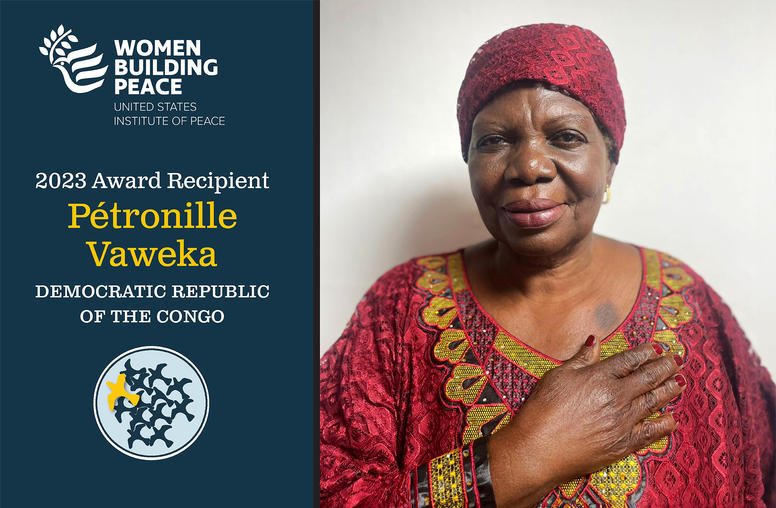USIP, U.S. Army Unveil First Civilian Doctrine for Peace Operations
On Oct. 7, 2009, the U.S. Institute of Peace and the U.S. Army's Peacekeeping and Stability Operations Institute unveiled the first strategic "doctrine"; ever produced for civilian actors involved in peace operations. The "Guiding Principles for Stabilization and Reconstruction" (S&R) is a practical roadmap for helping countries transition from violent conflict to peace.
For Immediate Release -- October 7, 2009
(Washington, D.C.) - On Oct. 7, 2009, the U.S. Institute of Peace and the U.S. Army’s Peacekeeping and Stability Operations Institute unveiled the first strategic "doctrine" ever produced for civilian actors involved in peace operations. The "Guiding Principles for Stabilization and Reconstruction" (S&R) is a practical roadmap for helping countries transition from violent conflict to peace.
"The question du jour is what the strategy in Afghanistan should be," said Beth Cole, lead writer for the manual. "This manual provides a strategic framework that can help guide that strategy."
Strategic guidance for civilian planners and practitioners engaged in these missions is long overdue. While the military for decades has been equipped with doctrine that guides its decisions and actions, civilian actors still operate today without any unifying framework or principles of action. The "Guiding Principles" seeks to fill this gap by introducing: 1) a comprehensive set of shared principles and 2) a shared strategic framework.
Both rise directly from the enormous wealth of knowledge and experience that has accrued across the global peacebuilding community over the last two decades. The development of the manual involved intensive vetting and consultation sessions with NATO planners, British stabilizers, U.N. peacebuilders and other key partners. It also involved a thorough review of hundreds of doctrinal documents produced by the very institutions that have toiled in these difficult environments.
One year ago today, the U.S. Army rolled out its unprecedented "Field Manual 3-07: Stability Operations," which established the U.S. military's support role in these missions. The "Guiding Principles" manual released today is a "companion" publication, designed to support the civilian side of the U.S. interagency—those entrusted to lead these challenging missions.
"This book will have an incredible impact on the future of civil-military integration. Together with the Army's revolutionary Stability Operations doctrine, these complementary manuals will influence our national security for generations," said Lt. Gen. William B. Caldwell, Commanding General of the U.S. Army's Combined Arms Center. "No civilian should deploy without them."
The "Guiding Principles" manual offers a critical tool for educating and training the thousands of new members in the Active, Standby and Reserve components of the U.S. government’s Civilian Response Corps. It can also assist all levels of individuals involved in any aspect of an S&R mission, be it decision-making, assessment, planning, training & education, implementation or metrics.
"Ad hoc, disorganized campaigns for peace have been the hallmark of past missions," said Amb. John Herbst, U.S. Department of State Coordinator for Reconstruction and Stabilization. "This two-year investigation into thousands of pages of documents written by dozens of agencies may help to mitigate the chaotic nature of these missions by finally putting into one place what we know. This manual is the bible for S&R missions."
The "Guiding Principles for Stabilization and Reconstruction" can be downloaded for free online here.

